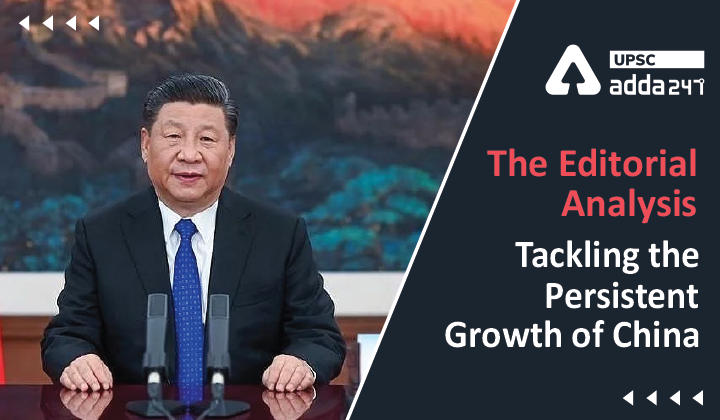Table of Contents
Chinese economy UPSC: Relevance
- GS 2: India and its neighborhood- relations.
Tone of the editorial
- The writer is a professor of economics at IIT Madras. In this article, he discusses how China has positioned itself to cause an unprecedented change in industrialisation.
Growth of Chinese economy: Key points
- Despite trade wars and the COVID-19 crisis, China has achieved remarkable achievement when it comes to economic growth.
- In 2020, when other economies were struggling to cope with the effects of the novel coronavirus pandemic, China’s manufacturing output increased from the previous year.
- According to official data from China’s National Bureau of Statistics, China’s economy grew by 8.1% in 2021, aided by growth in industrial production.
- While industrial production rose by 4.3% in December 2021 compared to 2020, fixed asset investment for 2021 grew by 4.9%, surpassing expectations of 4.8% growth.
- In 2021, overall retail sales grew by 12.5% from the prior year’s contraction, and also bettered the levels in 2019.
No De-factorisation
- In 2021, experts believed that factories would move away from China—the factory of the world.
- The reason for the above inference were the combined effects of COVID-19, geopolitical tensions and high tariffs.
- This shift in the global supply chain would have led to significant change in the geo-political relations as China accounts for about 30% of global manufacturing.
- However, this presumed shift could not occur as the Chinese economy seems to have recovered from a short-lived pandemic blip.
China’s advanced manufacturing
- China is stimulating overall growth by catalysing the industrial sector, pursuing a radical shift in its approach.
- China is using its increasingly skilled labour force and strategic raw materials to enhance its already highly developed manufacturing capabilities.
- This is pushing industrialisation toward ‘advanced manufacturing’ and higher levels of automation, which have been boosted by its world-beating adoption of artificial intelligence (AI).
- The effect of such a strategy is that Chinese manufacturing is moving toward a new kind of predominance in growing sectors that are less exposed to lower cost competition.
- The recent economic recovery has been aided by a massive adoption of artificial intelligence.
Way forward
- It might take years for the rest of the emerging economies to shift gears to move to the present phase of industrial production in China.
- As an early mover, ‘China is laying the groundwork for setting itself up to be a leader’.





 TSPSC Group 1 Question Paper 2024, Downl...
TSPSC Group 1 Question Paper 2024, Downl...
 TSPSC Group 1 Answer key 2024 Out, Downl...
TSPSC Group 1 Answer key 2024 Out, Downl...
 UPSC Prelims 2024 Question Paper, Downlo...
UPSC Prelims 2024 Question Paper, Downlo...
